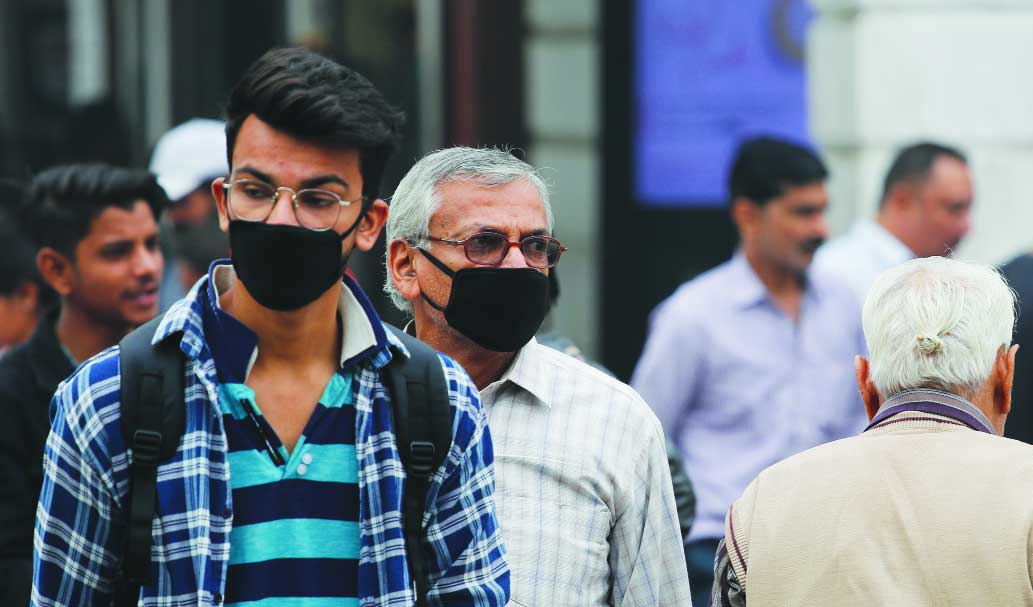The Parliament should wake up to formulate a national pollution policy this season to seriously fight a health hazard
For nearly three weeks now, Delhi has been at its toxic worst, happy to make peace with “very poor” to “very severe” air quality after a “hazardous” spell. So much so that we have forgotten what a sparkling winter weather is and have developed a kind of fatalism about choking ourselves. So as the air keeps thickening, saddled as it is with all sorts of poisonous gases that are harmful to human health — smoke, dust, carbon dioxide and acidic fumes — our ennui and lethargy settle just as stubbornly between its layers. We have slept through many wake-up calls and must realise that air pollution is not a seasonal or a State-specific issue, it affects our breathability round the year and should be treated as a national emergency. We may have the laws, graded action plans and preventive measures but we need a national, not a regional, will to implement them uniformly across the country and throughout the year. What else explains the blame-games between State Governments of Delhi, Haryana and Punjab or the fact that key officials from the Environment Ministry, the Delhi Development Authority (DDA) and the municipality did not deem it fit to attend a meeting organised by a parliamentary panel on pollution? MP Gautam Gambhir, who has been consistent in his social media sabre-rattling over pollution, failed to contribute in real terms when needed. Even the Supreme Court, which successively threatened to penalise bureaucracy in North Indian States for failing to control crop burning and pulled up the Delhi Government for just relying on the odd-even vehicle rationing scheme, has not been able to scale up the fear of a public health hazard. Officials have already said that managing stubble fires is impossible as farmers defy the ban in the absence of an affordable alternative model or a graded changeover to crops that don’t generate waste. Fact check: For all our claims of awareness and course-correction, the levels of PM 2.5 and PM 10 continue to spiral. The total volume of crop residue this year equals the combined output of the last two years. Burning crop residue makes up about 40 per cent of our brown haze, yet little effort has been made to either understand the reason behind it or the way it can be tackled. First, shredders are too expensive and varied for different crops. They leave stubs on surface soil that cannot be pulled out fast enough for preparing the farm beds for the next round of sowing, thus reducing the window before harvest. The cheapest and the fastest solution for farmers, therefore, is to set their fields on fire. Besides, farmers often use a combined harvester, which comes with its own demerits. Most crucially, it leaves up to 80 per cent of the residue on the field, which can only be eliminated through burning. Along with better solutions to junk their crop residue, farmers need solutions which can encourage them to use stubble for manure and enhance soil quality. At least the Centre, which professedly prioritises the farm economy, should incentivise stubble use, collect and buy residue up till mechanised shredders become viable in numbers and prices. Farm policies must be tweaked to reorient cropping patterns. We must discourage water-guzzling and stubble-prone crops like rice in Punjab and Haryana, the rice bowls in the plains enough to sustain volumes. But then there should be a subsidy offered for the switchover varieties, at least for the first few cropping seasons.
Per se, the Delhi Government’s odd-even scheme to control vehicular pollution is constructive but disproportionately ranged against four-wheelers. We have to now ration the most polluting two-wheelers. With even the top court ruling that the odd-even scheme is not a permanent solution and that cars constitute only three per cent to pollution levels, it is time to strengthen public modes of transport. As part of urban planning measures, green walls must be constructed to capture, reduce and trap dust. Beijing beat pollution by sticking to specific targets such as restricting the total number of vehicles to six million by the end of 2017, reducing coal consumption by 80 per cent by 2020 and meeting annual average PM 2.5 concentration of micrograms per cubic metre by 2017. For instance, in 2017, the quota for new vehicles was 150,000 cars there, with 60,000 allotted only to fuel-efficient ones. In 2018, it was reduced to 100,000. No action plan can work without targets and one hopes a national pollution policy is at least considered in this session of Parliament.


























